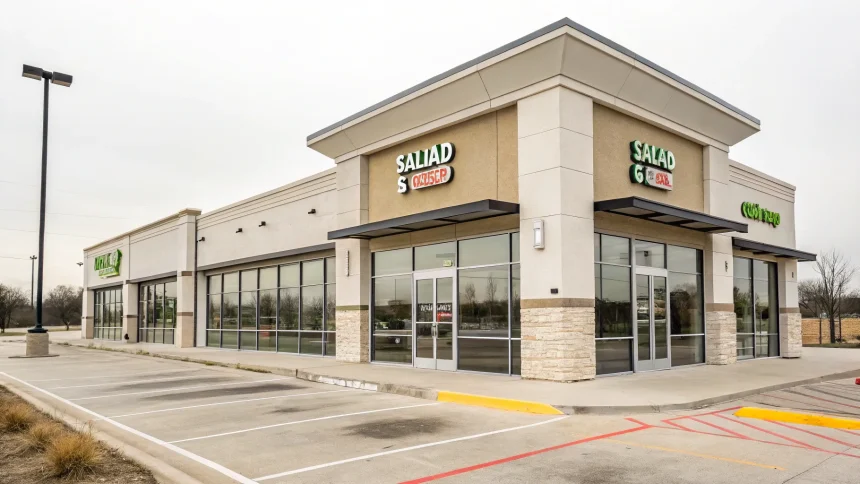Salad and Go is pulling back to move forward, announcing plans to shut dozens of stores while concentrating resources on the Dallas metro area and Oklahoma. The fast-casual chain says the decision is aimed at strengthening operations in two regions where it sees the best path to stability and growth.
“Fast-casual restaurant Salad and Go announced it will close dozens of locations to concentrate efforts on operations in the Dallas metro area and Oklahoma.”
The move leaves customers and workers across other markets facing uncertainty. It also signals a shift in strategy as restaurant operators respond to higher costs, uneven traffic, and fierce competition.
Why focus on Dallas and Oklahoma
Chains often cluster stores to improve efficiency. A tighter footprint can cut distribution costs, ease staffing, and help marketing reach more people for less. By centering on the Dallas metro area and Oklahoma, Salad and Go is betting that scale in a smaller geography will lead to better service and steadier performance.
The company did not share a timeline or the exact list of stores affected. It also did not say how many employees would be impacted. What is clear is a push to prioritize markets where the brand believes it has strong customer awareness and workable delivery routes.
What it means for workers and customers
Store closures can disrupt schedules, commutes, and community routines. Many workers may face transfers or job searches. Customers may lose a nearby option for quick meals.
- Employees may be offered roles in remaining stores, when possible.
- Gift cards and app rewards are typically honored at open locations.
- Closing stores may hold clearance days or reduced hours before the final day.
The company has not detailed transition plans, but customers in the Dallas metro area and Oklahoma should expect continued service as resources shift to those regions.
Reading the industry signals
The fast-casual sector faces higher food and labor costs, rising rents, and uneven demand. Many chains have trimmed underperforming units and focused on core markets. Others have slowed openings and concentrated on drive-thru, digital ordering, and simplified menus.
Analysts say consolidation can be a sign of discipline, not retreat. Closing weak stores can protect cash, improve training, and sharpen execution. The risk is that shrinking too much can dull a brand’s presence and make it harder to regain momentum later.
Salad and Go’s strategy mirrors a pattern seen across restaurants since 2022: test new markets, then reinforce the ones that deliver repeat visits and predictable logistics. A leaner network can also speed up product changes and quality control.
The path ahead: stability first
Focusing on fewer markets suggests a plan centered on operational fixes rather than rapid expansion. That could mean investments in staffing, training, supply reliability, and consistent menu availability. It may also enable shorter delivery routes and fewer stockouts.
If the moves improve store-level results in Dallas and Oklahoma, the company could use those regions as a template for future growth. If not, more adjustments may follow.
What customers should watch
In the near term, customers can expect clearer communication on which locations will remain open. They should also watch for changes in hours, menu availability, and service speed as the company concentrates its efforts.
- Updated store lists and hours on the company’s website and app.
- Notices about reward points and gift card use.
- Any new promotions in the Dallas metro area and Oklahoma as the brand works to build loyalty.
The company’s next steps will reveal whether this pullback is a short reset or a longer shift in strategy. For now, the signal is clear: fewer stores, tighter operations, and a bet on two markets that may offer the best return.
As closures roll out, the key measures to watch will be customer satisfaction, wait times, and consistency across the remaining locations. If those metrics improve, the reset could set a base for cautious growth. If not, the chain may need further changes to steady the business.







